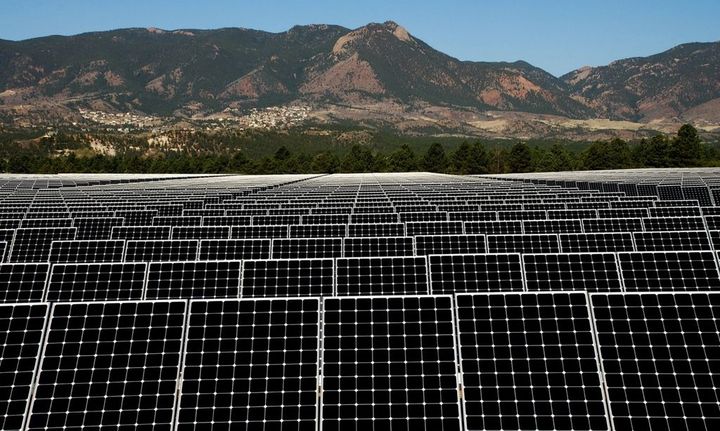
At one time, the price of manufacturing and installing photovoltaic cells was seen as a major stumbling block to their wide-scale use. But with recent drops in prices and boosts in efficiency, the rate at which the technology is being adopted increases dramatically with every passing year.
In fact, a report filed by the International Energy Agency states that at the current rate of increase, photovoltaic (PV) and solar thermal electricity (STE) systems could account for 27% of the energy market by 2050 – making it the single largest provider of electricity on the planet.
The dropping price for photovoltaic cells is also leading to an explosion in innovation. In addition to new and cost-cutting methods to produce them, numerous research labs have been working with nanoparticles, nanowires and specialized materials that, when added to solar cells, increase their yields and efficiency substantially.
The latest example comes to us the University of California, San Diego, where a multidisciplinary team has developed a new nanoparticle-based material for use in concentrating solar power (CSP) plants - one which is capable of absorbing and converting more than 90% of the sunlight it captures into heat.

In addition, it is said that the new material can also withstand temperatures in excess of 700 °C (~1300 °F) and has a life expectancy of many years - despite exposure to air and humidity. These make the material a welcome addition to CSP plants, which employ solar absorber materials that need to be overhauled at least once a year for higher temperature operations.
As Professor Sungho Jin – of the department of Mechanical and Aerospace Engineering at UC San Diego Jacobs School of Engineering – put it: “We wanted to create a material that absorbs sunlight that doesn’t let any of it escape. We want the black hole of sunlight.”
Compared to standard photovoltaic operations, concentrated solar power is generated by solar thermal plants that not only absorb sunlight, but thermal energy. Whereas conventional power plants use coal or fossil fuels to heat water and create steam to turn turbines, CSP plants create the steam needed to turn the turbine by using sunlight to heat molten salt.
Professor Jin, along with Professor Zhaowei Liu of the department of Electrical and Computer Engineering and Mechanical Engineering Professor Renkun Chen, is an expert in the field of material engineering. Together, they created a material that consists of a multiscale nanoparticle surface which is coated with silicon boride.

The multi-scale structures can trap and absorb light which contributes to the material’s high efficiency when operated at higher temperatures. The ability to operate at high temperatures is especially important given that current concentrated solar panel (CSP) plants are plagued by structural damage caused by extreme heat.
At least once a year, CSP plants are shut down for maintenance so that crews can removed degraded sunlight-absorbing material from the panels and apply new coating. This means that no power is being generated while this maintenance is taking place, which in itself runs the costs of CSP plants up. The UC San Diego research team material was designed with many years of usage life in mind, a feat they believe they are close to achieving.
 Hence why the US DOE’s SunShot programme solicited the help of the UC San Diego research team. The program was launched in 2010 by then-Energy Secretary Steven P. Chu with the goal of making solar power cost competitive with other means of producing electricity by 2020. Modeled after President Kennedy’s moon landing program, it is hoped that SunShot will similary inspire widespread interest in science and innovation.
Hence why the US DOE’s SunShot programme solicited the help of the UC San Diego research team. The program was launched in 2010 by then-Energy Secretary Steven P. Chu with the goal of making solar power cost competitive with other means of producing electricity by 2020. Modeled after President Kennedy’s moon landing program, it is hoped that SunShot will similary inspire widespread interest in science and innovation.
Concurrent with this goal, they are looking to challenge researchers to come up with materials that have a substantially longer life cycle and higher operating temperature. One of the main attractions of the UofC nanomaterial and others like it is that existing CSP facilities can easily be upgraded with the new material to boost their efficiency and tolerance.
Combined with other these solar technologies, carbon dioxied emission could be cut by more than 6 billion tonnes per year by 2050. THis is more than all current energy-related CO<sub>2</sub> emissions from the United States, or almost all of the direct emissions from the transport sector worldwide today. These an other predictions were part of the IEA annual Energy Technology Perspectives report for 2014.
Sources:
- www.energyvoice.com/other-news/72205/black-hole-sunlight/
- www.iea.org/etp/etp2014/
- www.geek.com/science/black-hole-of-sunlight-converts-90-of-captured-light-to-heat-1608600/
- www.theguardian.com/sustainable-business/2014/dec/09/we-want-the-black-hole-of-sunlight-solar-power-breaks-new-frontiers
- newsroom.sunpower.com/2014-10-02-SunPower-Solar-Panels-Awarded-Cradle-to-Cradle-Certification-for-Sustainable-Manufacturing-Processes
- www.iea.org/newsroomandevents/pressreleases/2014/september/how-solar-energy-could-be-the-largest-source-of-electricity-by-mid-century.html
Image Credits:
- Top Image: Sunpower
- CSP Plant: Wikipedia Commons
- Nanoparticles: ucsdnews.ucsd.edu
- Nanomaterial: UCSD








